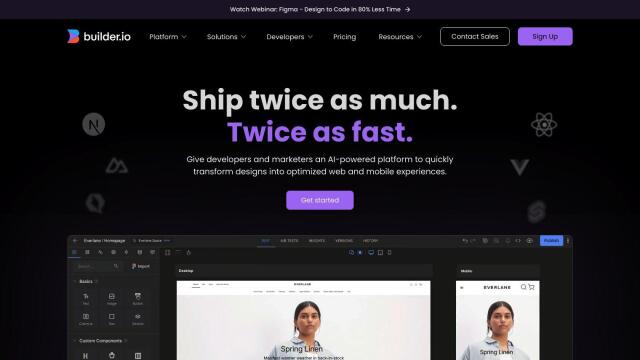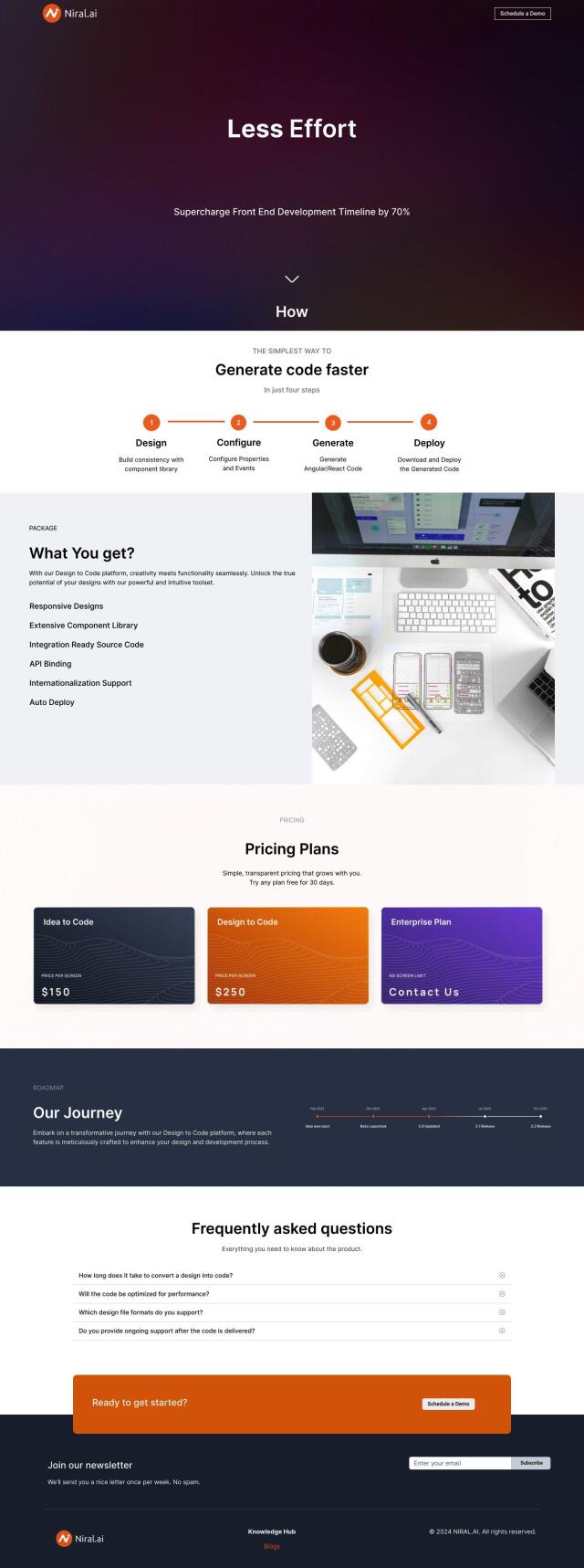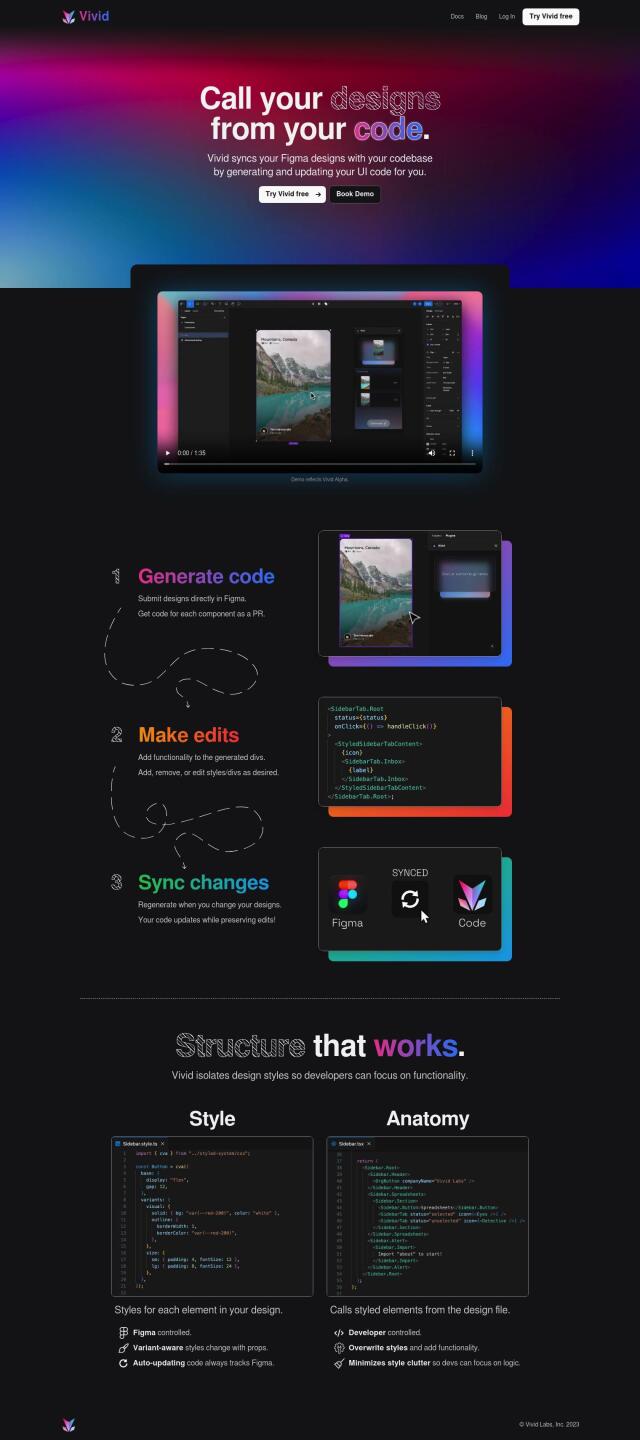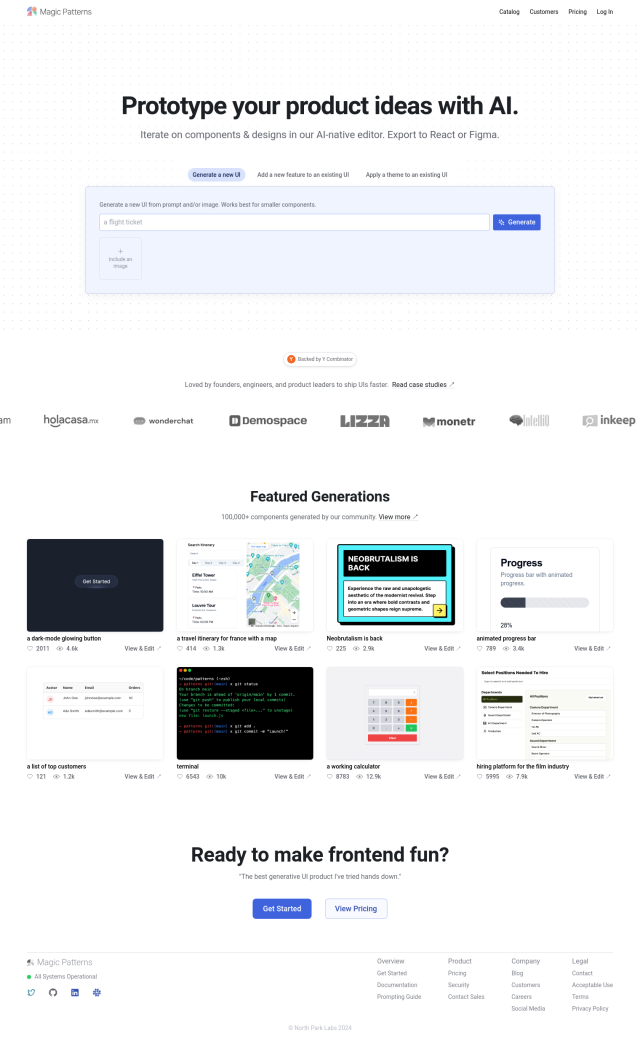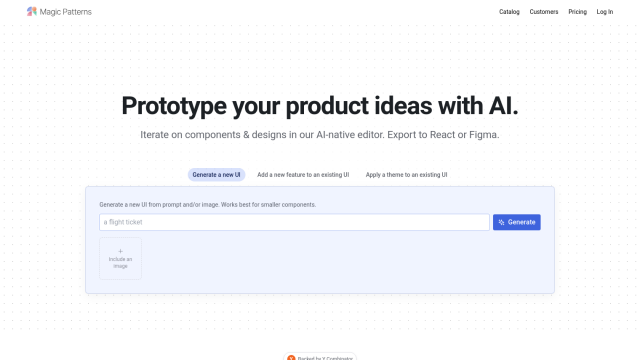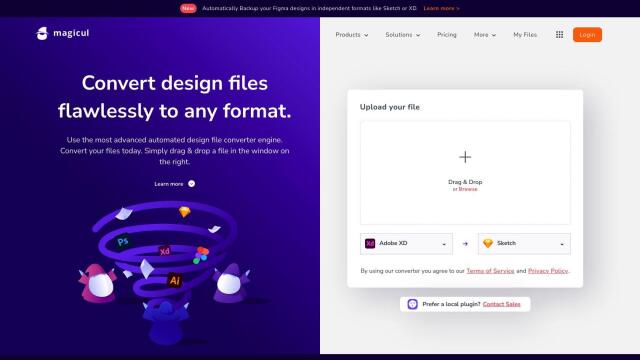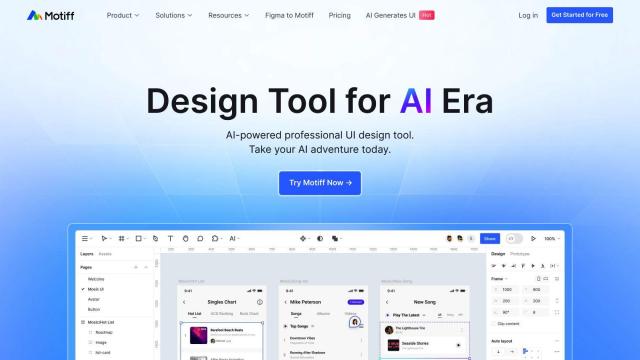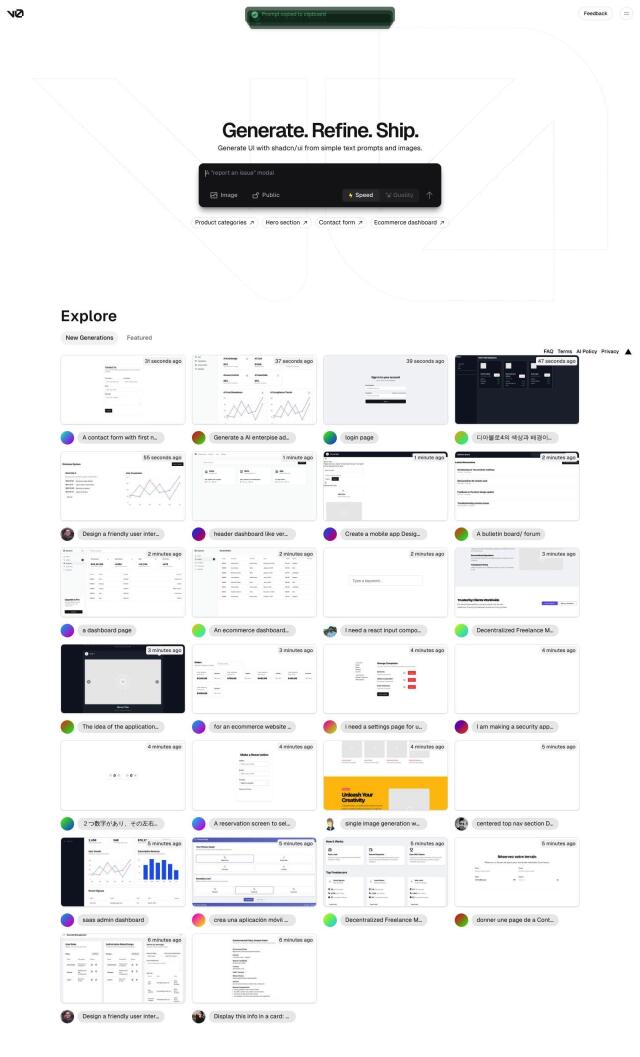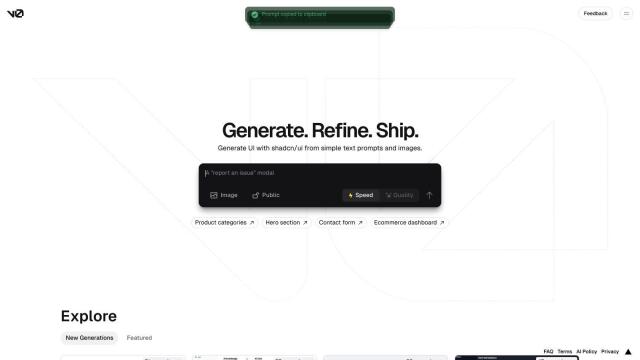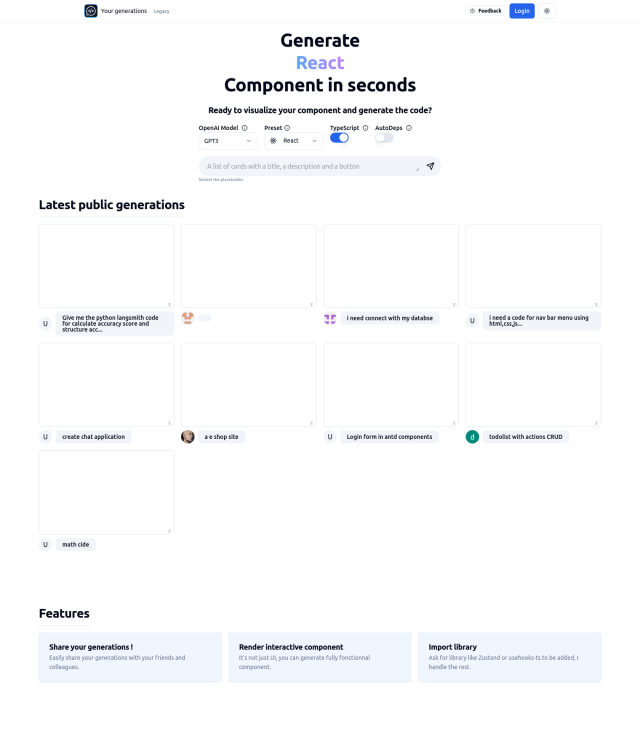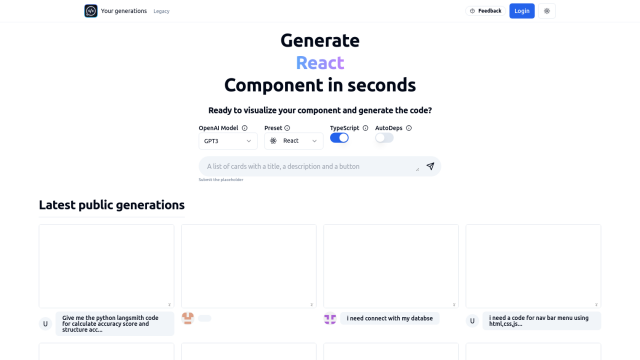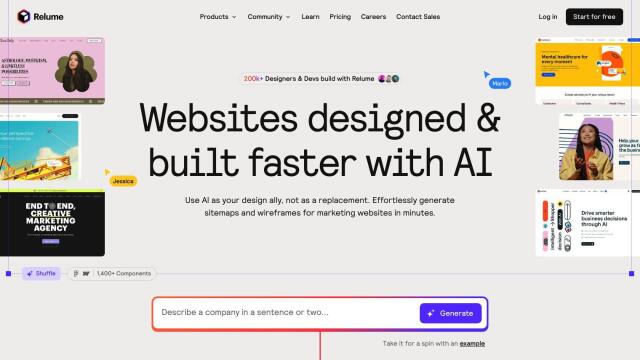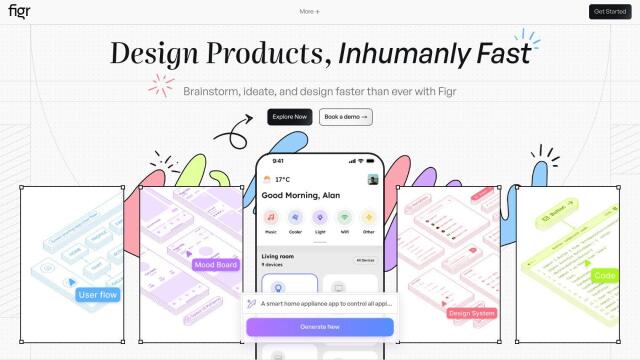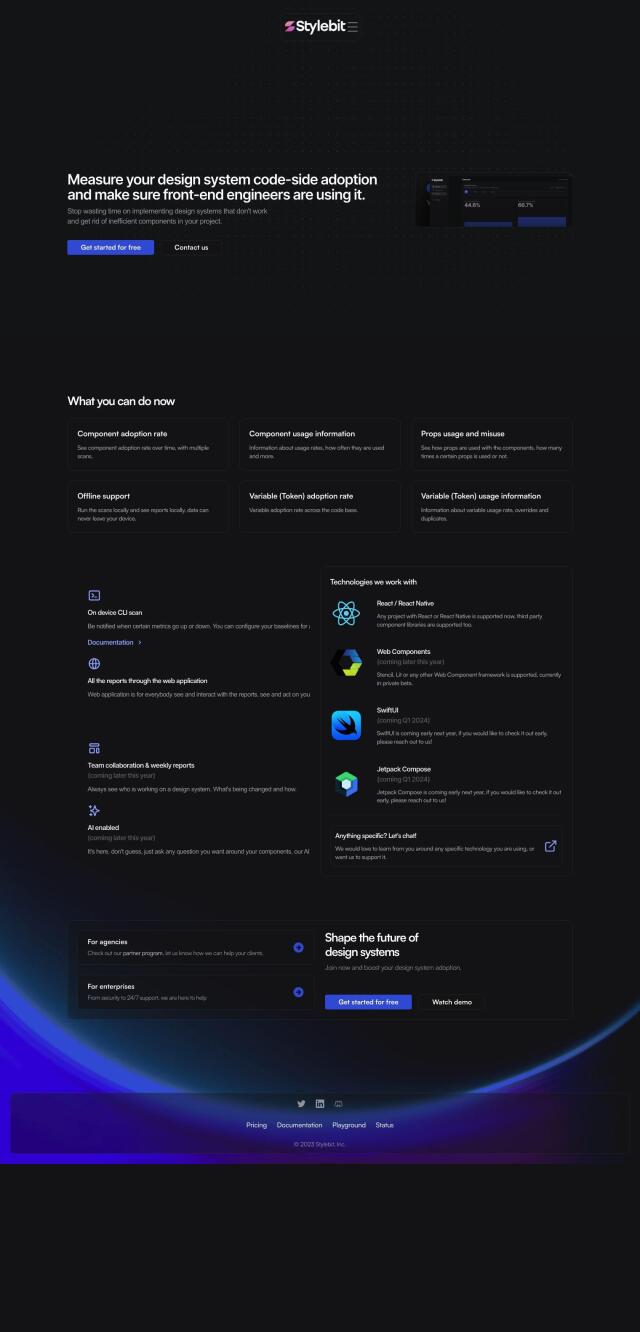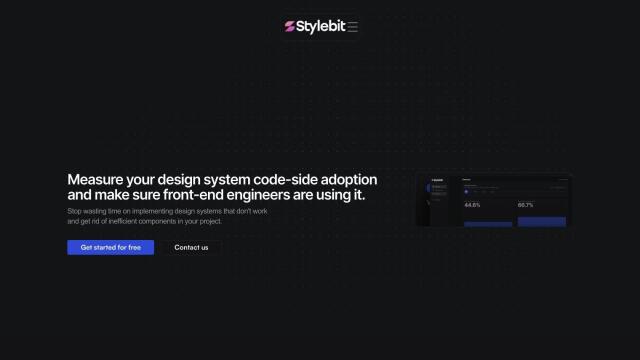Question: Can you recommend a tool that converts Figma designs into React components with minimal manual labor?


Quest
If you want to turn Figma designs into React components with the least amount of manual work possible, Quest is a top contender. It uses AI models to create responsive, multi-screen experiences with clean, modular code. Quest supports design systems and component libraries, and it includes features like Figma to Code, Animation Library, and Version Control, so it's geared for development teams.


Kombai
Another strong contender is Kombai, an AI-based design-to-code conversion tool that promises pixel-perfect results. It constructs logical div structures and React components with flexible CSS and high-quality JavaScript code, and supports frameworks like Vue and Angular. It's designed for collaboration and can save developers a lot of time by automating the development handoff process.


Codejet
If you want a more mature platform with design system integration, Codejet has a built-in Design System with more than 100 styles, components and templates in Figma. Codejet's AI Code Generation turns designs into code in seconds, and its Visual Editor lets you fine-tune the generated code visually. The service supports responsive web design and one-click deployment, so it's a good option for designers and developers.


Bifrost
Last, Bifrost is an AI-based tool that generates clean, type-safe, conditionally rendered React code from Figma designs. It supports popular frameworks like Tailwind and Chakra, and you can start with any screen or incorporate existing components. Bifrost is designed to get rid of tedious coding chores and speed up development cycles, so it's good for developers and designers.



